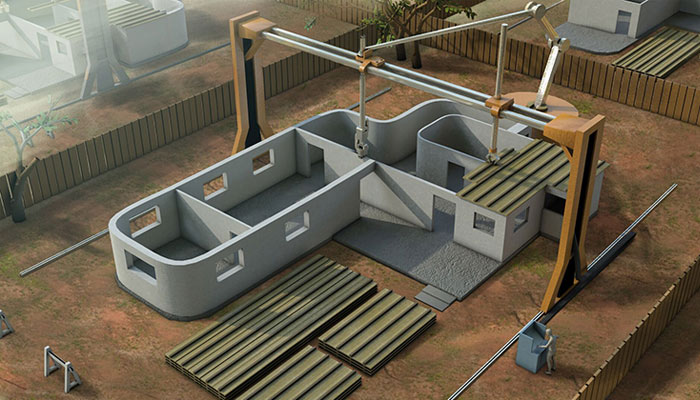As we navigate through the evolving landscape of innovation, one innovation stands significantly in the sector of building: 3D manufacturing. This remarkable method is revolutionizing the manner developments and structures are designed and constructed, introducing a new era of efficiency, eco-friendliness, and creativity.
Revolutionizing Building: One Stratum at a Phase
The implementation of 3D fabrication in construction offers various transformative gains. Foremost among these is the significant minimization in material excess. Conventional building methods usually result in significant excess materials that lead to environmental waste. In contrast, 3D manufacturing utilizes a meticulous stratum-by-stratum method, using only the necessary quantity of substance and thus minimizing excess greatly.
Another compelling advantage is the remarkable reduction in building duration. Undertakings that historically require months can be completed in a segment of the timeline with 3D manufacturing innovations. This time reduction is due to the self-operating mechanism of 3D machines that can work around the clock without worker assistance, considerably shortening total project timelines.
Moreover, 3D printing introduces prospects for developing sophisticated, tailored models at no additional expense. The flexibility of 3D machines allows for detailed patterns and shapes to be developed that would either be highly costly or impossible to attain with standard infrastructure approaches. This function not only enhances structural aesthetics but also enables engineers to maximize plans for enhanced performance and resilience.

Reducing Costs and Boosting Reachability
Budget reduction is yet another significant benefit brought about by 3D printing in building. By minimizing manpower spending and shortening the duration needed to finalize undertakings, the total expenditure associated with developing structures is reduced. Furthermore, cheap 3D manufacturing devices are growing more accessible, putting this innovation within reach of smaller businesses and individuals enthusiastic to explore its possibilities.
The affordability of these machines also opens opportunities for creativity in connected fields such as garment printing. While mainly acknowledged in building industries, the scope of 3D manufacturing extends into multiple domains including design. Here, designers innovate with 3D manufactured clothing, expanding artistic constraints and revolutionizing textile handling while benefiting from minimal manufacturing expenses.
A Sustainable Future Fueled by Progress
Eco-friendliness is another foundation of this technology’s attraction in the building industry. 3D manufacturing promotes a environmentally friendly strategy to construction by minimizing resource waste and power expenditure. Additionally, it facilitates the use of sustainable substances like reclaimed synthetics or hybrid materials, which further decreases the environmental effect of this conventionally resource-intensive sector.
The global shift to sustainable approaches finds a powerful supporter in 3D manufacturing systems, likely revolutionizing how structural policies and requirements are formulated in the future. By integrating these innovative processes, the infrastructure industry advances toward achieving eco-friendly operational practices.
Bringing Dreams to Life
Picture neighborhood centers in low-income regions being constructed within weeks to serve urgent needs or architects creating marvels inspired by natural patterns that merge effortlessly into their landscapes – such scenarios are not just hypothetical but are rapidly becoming possible through 3D manufacturing.
While these achievements signify just the beginning, they indicate a time where building aligns seamlessly with both cultural ambitions and environmental responsibility.
If we advance on this path, construction will not only signify the tangible development of structures but also signify a commitment to innovative thinking and ethical practices. Merging imagination with practicality, 3D manufacturing stands poised to transform our tangible world in manners we are just starting to comprehend.
Through continual improvements and an embracing of these forward-thinking approaches, our developed surroundings will surely morph into representations of societal ingenuity fueled by the precision and limitless potential of 3D fabrication.
To learn more about may in 3d explore this useful website: click site
